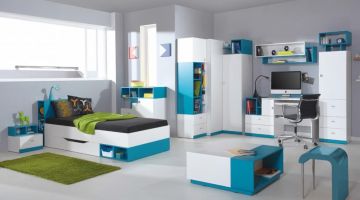Safety is the primary criterion when it comes to lighting a child's room. While all lighting fixtures in the home should meet safety standards, children do not have the same ability as adults to handle electrical devices. Therefore, special care is necessary.
- The Risks of Child Curiosity
The biggest risk comes from children's curiosity. Young children often try to explore their environment by creating makeshift ladders or disassembling objects to see how they work. This includes lighting fixtures, which is why careful selection is essential.
Lighting should be placed in areas that are difficult for children to reach, and the quality of their construction is also critical.
- An Evolving Space
The child's room is the fastest-evolving space in the home. As children grow, their needs change rapidly. Simple play becomes more complex, and activities like drawing and studying require different lighting setups. Therefore, the lighting design must consider future needs.
- Durability: Key to Longevity
Lighting fixtures in a child's room undergo tough trials. Thus, durability is another criterion that must be examined. The quality of construction and the ability to repair any potential damage will ensure long-term use.
- Types of Lighting
General lighting should be at a level of 150-200 lux, preferably indirect and adjustable with a dimmer. Indirect lighting is ideal for infants, as it protects their sensitive eyes from harsh light.
For task lighting, adequate lighting is required at the desk (300-500 lux) and on the nightstand (70-120 lux). Here, flexible desk lamps and small nightstand fixtures that can be mounted or secured to the wall are preferred, minimizing the risk of tipping over.
- Night Lighting and Psychological Needs
Night lighting can provide additional safety and reduce children's fears of the dark. It is important to use fixtures that facilitate navigation in the room without disturbing sleep.
- Avoiding Dangerous Solutions
Theatrical lighting and fragile fixtures have no place in a child's room. Additionally, makeshift and cheap constructions should be avoided, as they often do not meet safety standards. It is better to invest in branded fixtures that comply with international safety standards.
- Conclusion
The safety of our children is worth far more than the "extra" we may need to spend on quality lighting. Lighting fixtures are electrical devices that can turn a low purchase price into a tragic cost. By making careful choices, we ensure a safe and functional environment for our children, promoting their development and well-being.
Panos Mathios
Lighting Consultant
luceHabitat
Panos Mathios
Lighting Consultant
luceHabitat
Share it:
 English
English
 Greek
Greek





